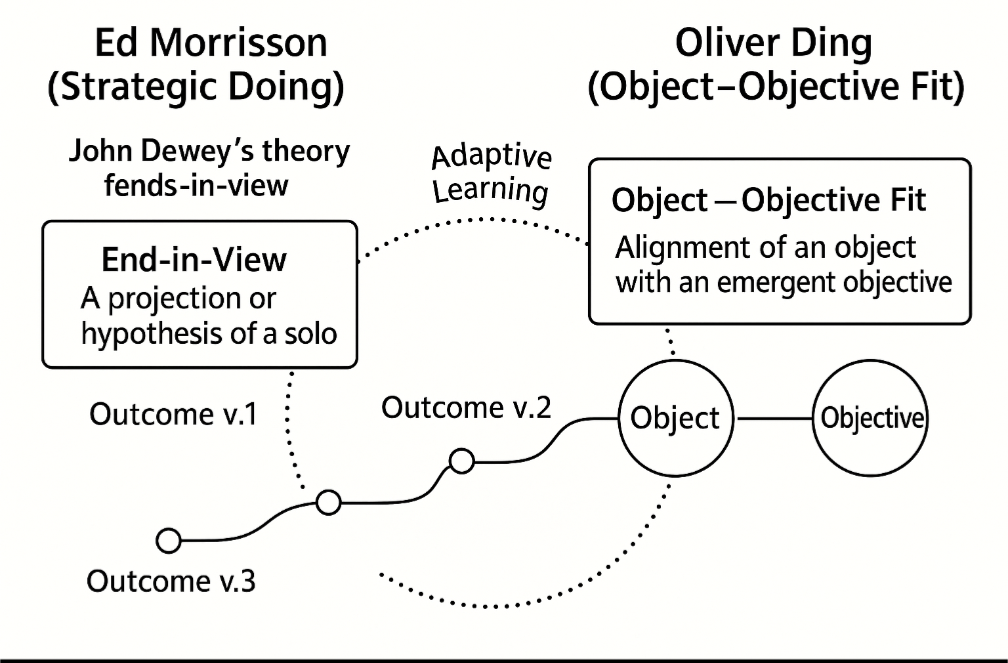Concept Ed Morrison (Strategic Doing) Oliver Ding (Object–Objective Fit)
Conceptual Bridge: Ed vs. Oliver
Core Idea Strategy as a learning process grounded in action Strategic fit between what we are (Object) and what we aim for (Objective)
Anchor Philosophy John Dewey’s Ends-in-View—provisional outcomes revised through doing Activity Theory + Anticipatory Systems—future is co-shaped by evolving object and discovered objective
Nature of Goals Hypotheses that evolve (Outcome v.1, v.2…) Possible Objectives that emerge through exploration
Process Experiment → Reflect → Adapt Evolve Object → Discover Fit → Align with Objective
Mindset Pragmatic, participatory, action-oriented Reflective, iterative, sensemaking-driven
Visual Language Journey with evolving outcome markers Object evolving through opportunity discovery into a strategic fit
What Unites Them?
Both embrace uncertainty: Outcomes and objectives are not fixed—they emerge through action.
Both emphasize adaptive learning: Reality is co-constructed, not predicted.
Both highlight the need for collective intelligence: You don’t act alone—you engage stakeholders.
Both models make doing central to knowing.
---
Why This Matters for RMW360
Whether you are guiding hospital innovation or personal reinvention:
Use Ed’s lens to keep your strategies grounded in what works in practice.
Use Oliver’s model to align your evolving self/system (object) with future intent (objective) as it becomes clearer
 you’re essentially living at the intersection of both frameworks.
you’re essentially living at the intersection of both frameworks.



Comments
Post a Comment